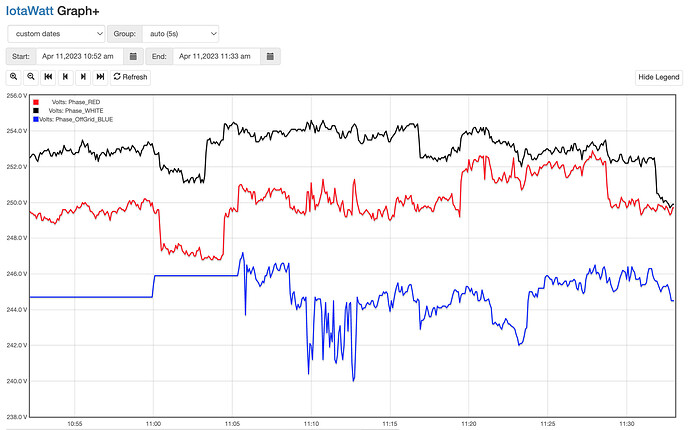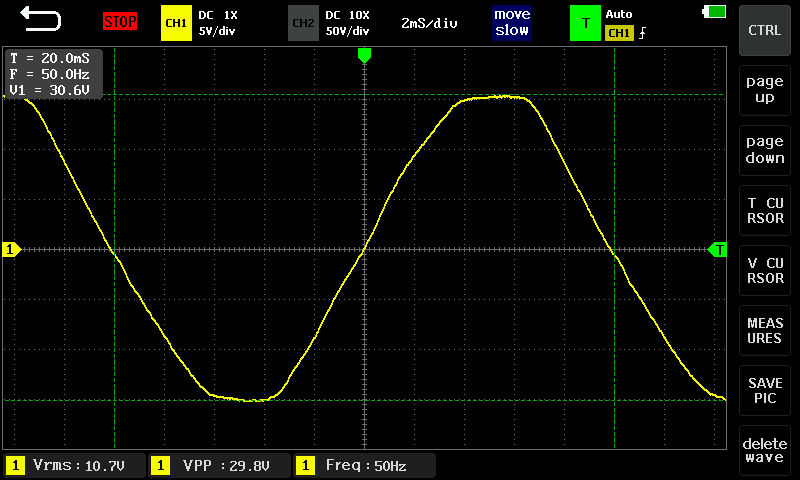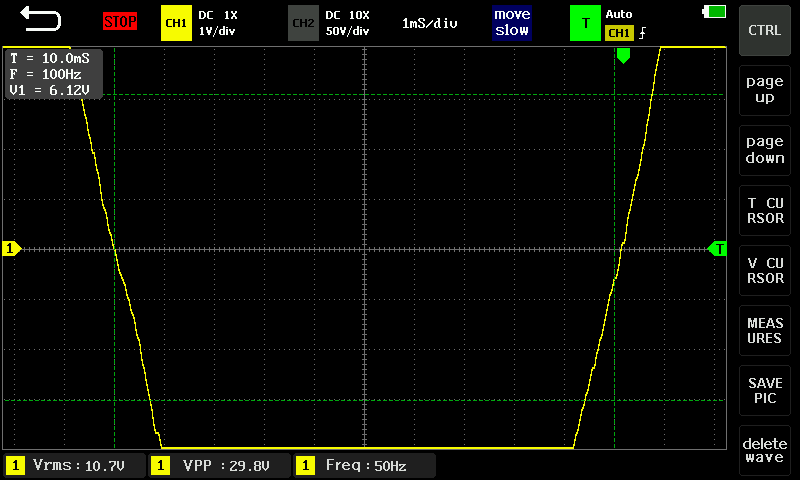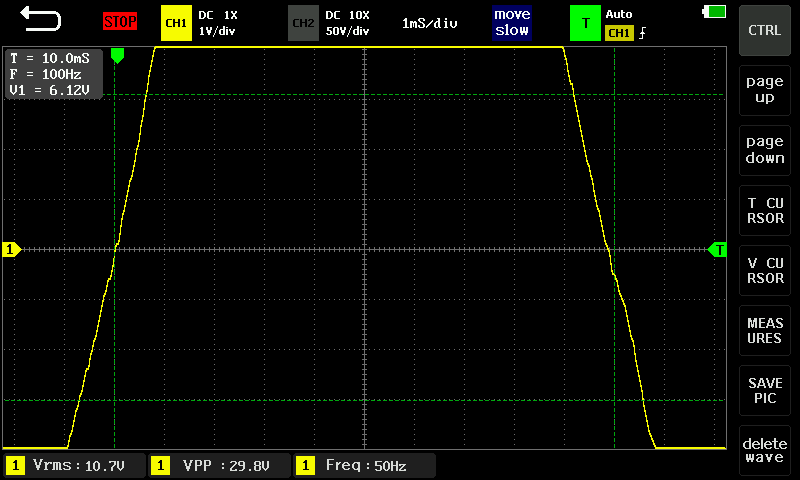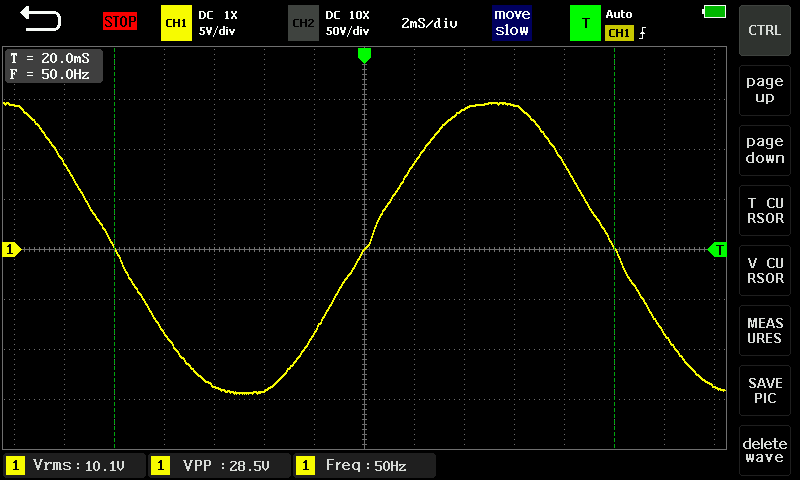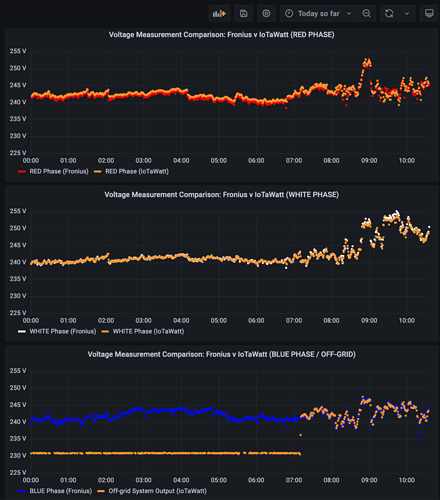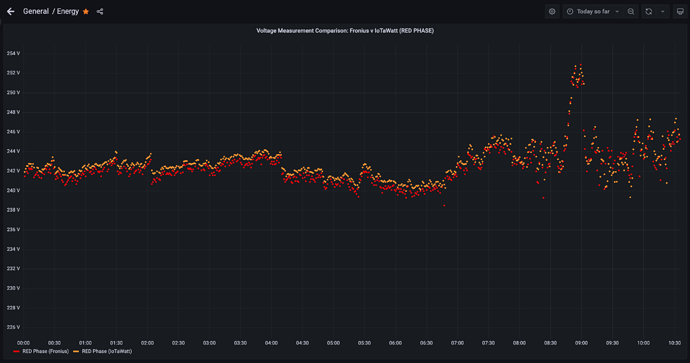OK thanks for the detailed explanation. It’s a bummer. Not sure there is much I can do about it (other than install a different inverter). I’ll share my findings with the supplier but am not expecting much from them.
At least it is good to have an understanding of what’s going on.
The level of waveform asymmetry must be variable given it does work occasionally.
In the meantime I’ll work with what I have got. The reference voltage phase RED + 240 is working pretty well and I am getting decent data.
Is that the best derived reference to use, or is there a derived value from the two other phases (RED & WHITE) which might be an improvement?
Aside from that I’ll move onto the next stage of working on exactly how I want to configure the CTs and some good use of the data.
My electrician was in today finishing off some wiring upgrades for the system.
Appreciate your patience and assistance. I was hoping originally to share another installation story but it turned into a sleuthing epic!
Thanks again
I have news, of the good variety.
I can now get reliable voltage readings from the off-grid / BLUE phase VT. 
Posting elsewhere, someone asked if my inverter’s voltage input setting was in APL (appliance) or UPS mode. They asked because they discovered their inverter had created some waveform oddities when in UPS mode.
Well my inverter is indeed in UPS mode. So a bit after 11:05 AM today I changed it to APS mode and voila, voltage readings from that VT come back to life!
The APL/UPS voltage input setting is a little obscure, the main functional difference being the rate of switchover if grid power is cut. In UPS mode it’s 10ms, in APL mode it’s 20ms.
But there must be something the inverter is doing when in UPS mode which distorts the voltage waveform that it does not when in APL mode.
So will now be able to revert all those circuits over to using the VT’s direct voltage reference. And given the voltage differences, it will improve accuracy quite a bit.
When I get an opportunity I will take the oscilloscope out and capture the waveform again, so we can compare to the other one.
And some waveform pics.
This is the output waveform from the off-grid inverter in Utility First / APS mode. The IoTaWatt is now reading this OK:
The asymmetry is still there but not quite as bad. The waveform is still a little distorted but has a slightly more “normal” shape when compared with Utility First / UPS mode:
Zooming in I get a zero crossing time differential closer to 200 µs:
First half of Utility First / APS waveform is ~10.1 ms, perhaps a fraction more:
Second half is ~9.9 ms, perhaps a fraction less:
This is about half the asymmetry I was seeing when the inverter was operating in Utility First / UPS mode.
Fortunately whatever it actually is, it is now able to be processed by the IoTaWatt.
Sample csv attached from channel 14:
VT-14 Off-grid Utility First APL mode.csv (12.1 KB)
1 Like
It’s obviously a solid-state switch as 10ms is half of an AC cycle and 20ms is a whole AC cycle. I agree the “slow” switchover state has a better-looking waveform. Important thing is that IoTaWatt seems to be able to deal with it.
Thanks, it all been an interesting learning experience.
For completeness, I also captured a waveform from the inverter later in the day when it had switched over to SBU mode and was generating its own power from the battery (and what little solar PV was available by that time late in the day):
A more sinusoidal looking waveform with a symmetrical time period.
1 Like
And here’s a comparison of the voltage readings from the IoTaWatt with those from my Fronius 3-phase meter:
They are in very nice alignment, with a very small bias on Red phase, of about 0.5 - 1 V (0.2%-0.4%). Nothing to say the Fronius is correct. Out of the box the VTs are on the money.
The IoTaWatt trace (orange) for the Blue phase shows the characteristic voltage jump when the output from the off-grid inverter transitions from SBU mode (running from battery) to Utility First mode (passing grid power through to loads).
Zooming in on Red:
All looking good.
1 Like
